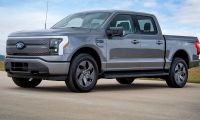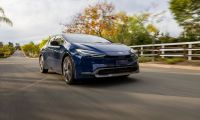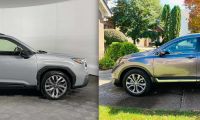The secret to Kia’s success is their product line, and their electrified vehicles especially, as well as their ability to better navigate the pandemic induced semiconductor shortage by quickly sourcing parts and adapting production better than other manufacturers. According to Automotive News Europe, Kia was the best selling brand in the UK last month. And according to InsideEVs, plug-in cars also accounted for more than one fifth of the UK market for January 2022, also. 115,087 vehicles were sold in the UK in January, and more than 23,000 of them were plug-in vehicles. Of note, the total number of sales is still down about 23% from January 2020, before the pandemic hit, however around 3 times as many plug-in vehicles were sold in the UK this year compared to January 2020. In the UK, Kia took the first and third best selling spots by model, with the Sportage occupying first place, and the Niro in third. Also of note, as was indicated in the InsideEVs article above, the gains plug-in vehicles made seem to have been at the detriment of diesel powered vehicle sales as only their sales were down, year over year (and down dramatically I might add). If Kia keeps landing in the top selling spots, it's going to have to either increase production (which it will certainly attempt to do), or if they can’t due to supply chain issues, devote more of their parts supply toward more expensive, higher profit models, which currently include its plug-in and hybrid vehicle lines. This is a tactic other automakers employ, as Automotive News Europe describes and, within limits, would likely be true for Kia as well.
In other European markets, Norway for example, 19 of the 20 best selling new car models were electric and EV’s had almost 84% market share according to Euronews.com. Overall, the European market saw plug-in vehicle sales more than double 4 out of 12 months, increase solidly in 7 of the remaining 8, and almost tie the Dec 2020 figures in Dec 2021, combining for a 66% increase year over year according to InsideEVs. If the trend continues, within only a few years, the majority or even the vast majority of all new vehicles sold in Europe could be plug-in vehicles. That is something Kia and other automakers may not be able to support, even if they prioritize more profitable models, if enough batteries can’t be supplied to meet the full European market’s demand given its rapid rate of increase.
Will we follow a similar path in the U.S. and might it lead to a situation, later this decade, where the demand for plug-in vehicles outweighs supply? People might suggest no, because the U.S. has so much more open, sparsely populated space and American consumers may be generally less interested in or incentivized to purchase plug-in vehicles, compared to Europeans. I would propose that the U.S. will follow a similar path, though it will likely take us longer to get there given our predilection for much larger, heavier vehicles (pickups and large SUVs) that are harder to electrify (due to volume of batteries needed) and consequently more expensive. Even if the federal and state governments do not do more to incentivize U.S. buyers though, once there are more plug-in vehicle choices available to U.S. customers, in volume, the shift to plug-in vehicles will accelerate at full-speed and automakers will likely struggle to keep up with demand. The reason I think this: how many people will still want a traditional gas burning vehicle once plug-ins are available in a full selection of models and brands? Some people certainly, like those who don’t have access to home, work, or cheap/easy public charging for example, or perhaps those that tow heavy loads on a daily basis. But then, how many people do you know that still have or want a flip phone, a tube television, or a horse and buggy?
Kia, Hyundai and other automakers are really in a race against time, as I see it. They seem to be sincerely attempting to increase plug-in vehicle production as fast as they can and they are selling every one they make, quickly, but they still have traditional fossil fuel product lines too and the world’s factories and supply chains can only produce so many batteries. But the changes in market demand, created by the switch to plug-ins, could leave any of them in a lurch. What happens if, in a few years in Europe, most customers simply don’t want to buy a vehicle without a plug? Will it mean some automakers abandon product lines, fold, or merge to stay in business? It doesn’t take all customers switching to plug-ins to make those things happen, it doesn’t even take a majority. If only 30-40% of all new vehicle sales across Europe end up being plug-in vehicles within 3-4 years, it will mean drastic change is in store. Those automakers, like Kia and Hyundai, that adapt the quickest to change in the market, will have the best odds for surviving, and thriving in the transition.
Image provided by Kia.
Justin Hart has owned and driven electric vehicles for over 14 years, including a first generation Nissan LEAF, second generation Chevy Volt, Tesla Model 3, an electric bicycle and most recently a Kia Sorento PHEV. He is also an avid SUP rider, poet, photographer and wine lover. He enjoys taking long EV and PHEV road trips to beautiful and serene places with the people he loves. Follow Justin on Twitter for daily KIA EV news coverage.












